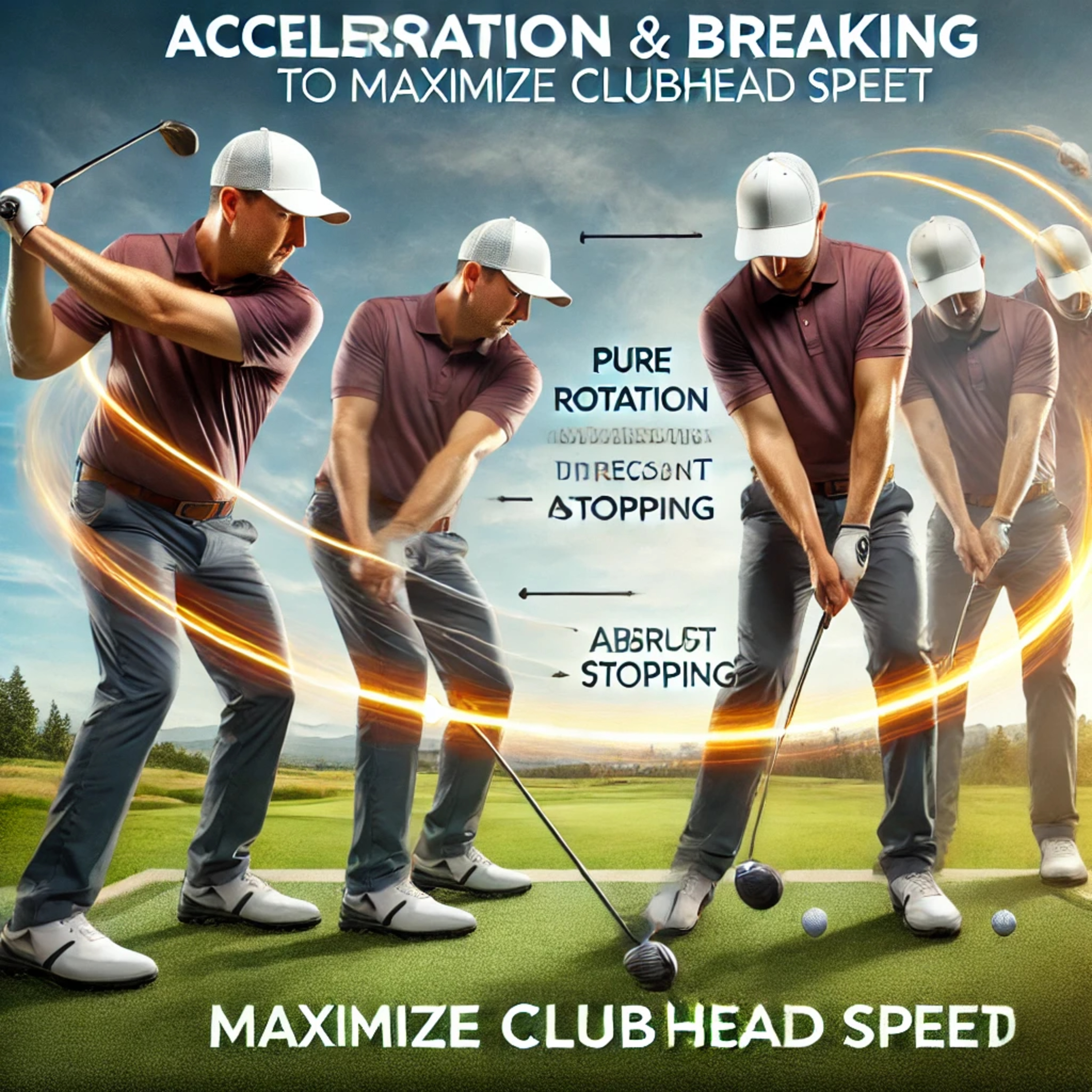#162 Maximum Clubhead Speed: The Acceleration and Braking Method ⚡🏌️♂️
- Author
- Golf247.eu
- Published
- Wed 12 Mar 2025
- Episode Link
- https://podcasters.spotify.com/pod/show/puttin-pro/episodes/162-Maximum-Clubhead-Speed-The-Acceleration-and-Braking-Method-e2v7f72
Henrik Jentsch from the SFT Golf Academy explains how to generate maximum clubhead speed. Contrary to the common belief that fast hip or shoulder rotation is the key, he emphasizes the principle of acceleration and braking. He illustrates this with a ball 🎾, where energy transfer occurs through an abrupt stop in movement. This energy transfer is applied to the golf club 🏌️, with the braking of the arm directing the energy into the clubhead to maximize speed. Jentsch demonstrates this using an alignment stick 📏 to highlight the difference between pure rotation and the "braking" technique.
Acceleration and braking play a crucial role in generating maximum clubhead speed. The key is understanding energy transfer, similar to a ball that has no energy of its own.
- 🚀 Acceleration: The club is first accelerated.
- 🛑 Braking: The movement is then abruptly stopped. This stopping motion transfers energy from one body part to the next. In the golf swing, this means energy moves from the shoulders through the arms into the clubhead.
- When you move a ball, it has no energy of its own.
- When you move the ball and then suddenly stop, the energy is transferred from the hand to the ball.
- Swinging an alignment stick with force and rotation may create a sound, but it does not generate maximum speed.
- However, if the stick is accelerated and then abruptly stopped ("braked"), the energy is transferred more efficiently to the tip, resulting in higher speed.
It is essential not to focus solely on hip or shoulder rotation 🔄 but to use the acceleration and braking effect to transfer energy optimally to the clubhead. Neither the ball nor the clubhead has its own propulsion. Their movement and speed result from the transfer of energy, which is generated through acceleration and braking.
According to Jentsch, a common misconception about generating speed is that from the top of the backswing, one must rotate the hips or shoulders very fast and forcefully. However, he explains that the real key is accelerating and braking to create maximum clubhead speed 🏌️♂️💨. Neither the ball nor the clubhead has its own propulsion.
🔄 The Role of Acceleration and Braking⚙️ The Process of Energy Transfer:🎾 Analogy with a Ball:📏 Example with an Alignment Stick:
